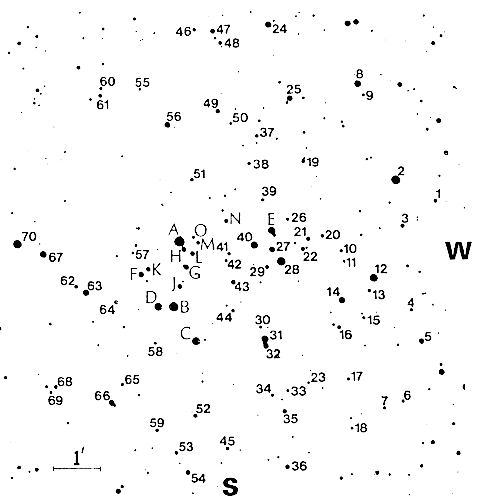Open Cluster Roslund 3

Object Description
The Roslund catalog is a small, little-known collection of just 7 items. The objects recorded in it were not discovered after visual observation but were found during spectroscopic measurements. Therefore, they are considered to be hardly observed and are usually difficult to spot in the swarm of stars due to their location near the Milky Way. Roslund 3 is an Open Cluster with Trümpler classification IV 1 p. Translated, this means: a cluster with few members (p=poor), which hardly stands out from the surroundings (IV) and has a fairly even distribution of brightness among the cluster members.
| Name | Cl Roslund 3 |
| Object Type | Open Cluster |
| Right Ascension (J2000.0) | 19h 58m 49s |
| Declination (J2000.0) | +20° 30' 18" |
| Parallaxes | 0.585 mas |
| Radial velocity | -12.91 km/s |
| Redshift z | -0.000043 |
| Angular size | 9.7' × 9.7' |
| Identifiers | C 1956+203; Cl Roslund 3; [KPR2004b] 471; [KPS2012] MWSC 3213 |
How to find Roslund 3?
Open star cluster Roslund 3 lies about 1 degree north of γ Sagittae, the second star from the arrow's tip of constellation Sagitta. Together with this and the 5m1 star η Sagittae, the small cluster forms a north-pointing right triangle. On 21 July it is in opposition to the Sun and crosses the meridian at local midnight. The constellation can best be observed in the months of March to December.

Visual Observation
200 mm aperture: At medium magnification one first sees a chain of stars around the tenth magnitude coming from the north, which bends to the east and then spirals in. At the northern beginning of this chain there is a small line of stars in a north-easterly direction. This can be seen as the snail's tentacles, the north-south chain as the body, and the spirals as the snail's shell - hence the name: Snail-Cluster, a north-creeping snail. The actual cluster members are only in the snail shell. The two chains mentioned happen to be there and don't belong to Roslund 3.
The description «poor» by Trümpler matches very good and even with a larger aperture not many stars follow. The dominant pentagon remains with a few fainter stars.
